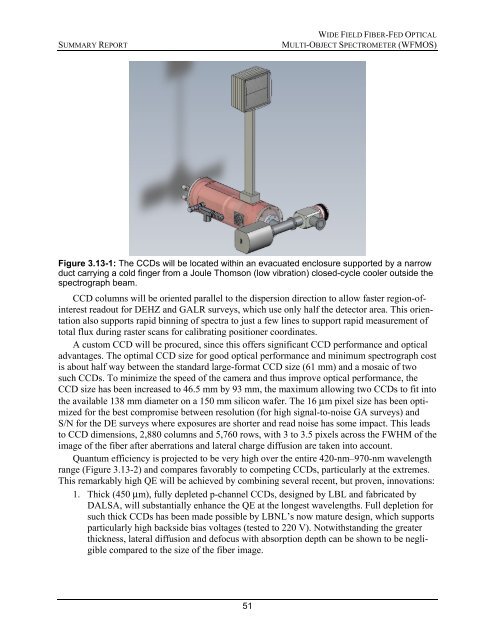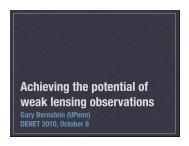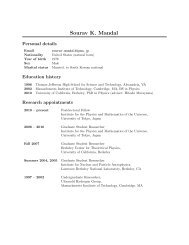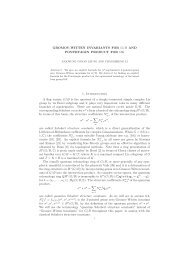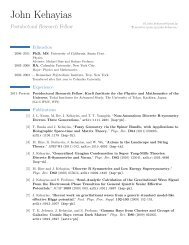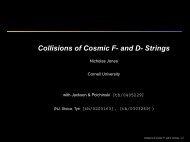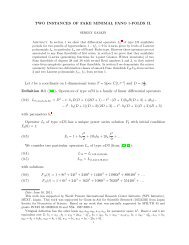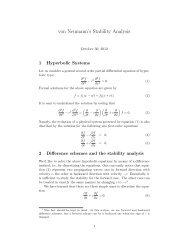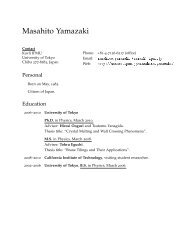STUDY SUMMARY - IPMU
STUDY SUMMARY - IPMU
STUDY SUMMARY - IPMU
Create successful ePaper yourself
Turn your PDF publications into a flip-book with our unique Google optimized e-Paper software.
<strong>SUMMARY</strong> REPORT<br />
WIDE FIELD FIBER-FED OPTICAL<br />
MULTI-OBJECT SPECTROMETER (WFMOS)<br />
Figure 3.13-1: The CCDs will be located within an evacuated enclosure supported by a narrow<br />
duct carrying a cold finger from a Joule Thomson (low vibration) closed-cycle cooler outside the<br />
spectrograph beam.<br />
CCD columns will be oriented parallel to the dispersion direction to allow faster region-ofinterest<br />
readout for DEHZ and GALR surveys, which use only half the detector area. This orientation<br />
also supports rapid binning of spectra to just a few lines to support rapid measurement of<br />
total flux during raster scans for calibrating positioner coordinates.<br />
A custom CCD will be procured, since this offers significant CCD performance and optical<br />
advantages. The optimal CCD size for good optical performance and minimum spectrograph cost<br />
is about half way between the standard large-format CCD size (61 mm) and a mosaic of two<br />
such CCDs. To minimize the speed of the camera and thus improve optical performance, the<br />
CCD size has been increased to 46.5 mm by 93 mm, the maximum allowing two CCDs to fit into<br />
the available 138 mm diameter on a 150 mm silicon wafer. The 16 μm pixel size has been optimized<br />
for the best compromise between resolution (for high signal-to-noise GA surveys) and<br />
S/N for the DE surveys where exposures are shorter and read noise has some impact. This leads<br />
to CCD dimensions, 2,880 columns and 5,760 rows, with 3 to 3.5 pixels across the FWHM of the<br />
image of the fiber after aberrations and lateral charge diffusion are taken into account.<br />
Quantum efficiency is projected to be very high over the entire 420-nm–970-nm wavelength<br />
range (Figure 3.13-2) and compares favorably to competing CCDs, particularly at the extremes.<br />
This remarkably high QE will be achieved by combining several recent, but proven, innovations:<br />
1. Thick (450 μm), fully depleted p-channel CCDs, designed by LBL and fabricated by<br />
DALSA, will substantially enhance the QE at the longest wavelengths. Full depletion for<br />
such thick CCDs has been made possible by LBNL’s now mature design, which supports<br />
particularly high backside bias voltages (tested to 220 V). Notwithstanding the greater<br />
thickness, lateral diffusion and defocus with absorption depth can be shown to be negligible<br />
compared to the size of the fiber image.<br />
51


